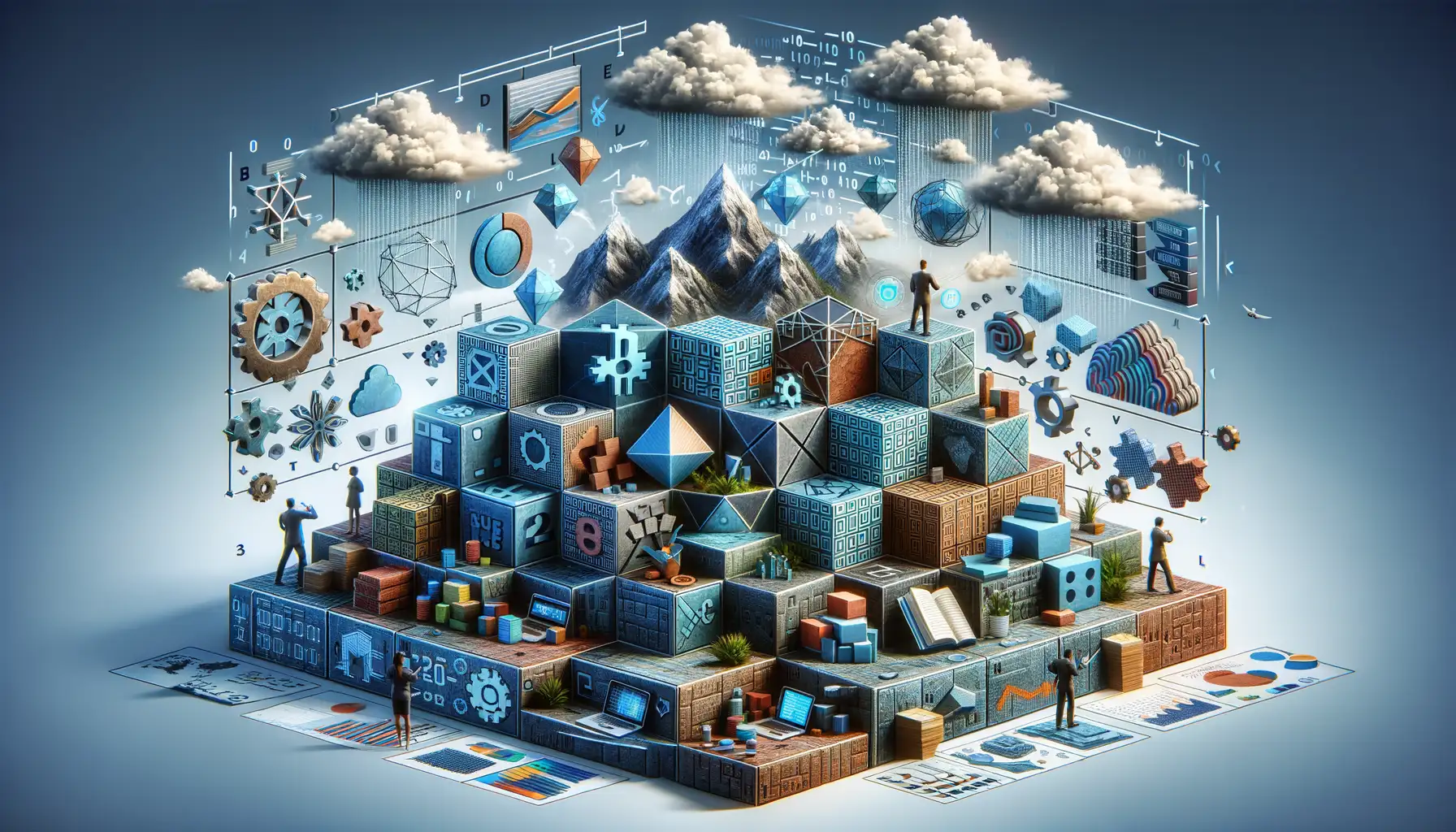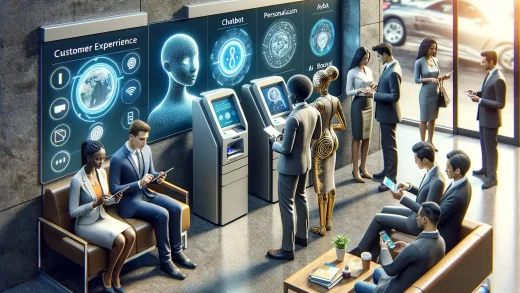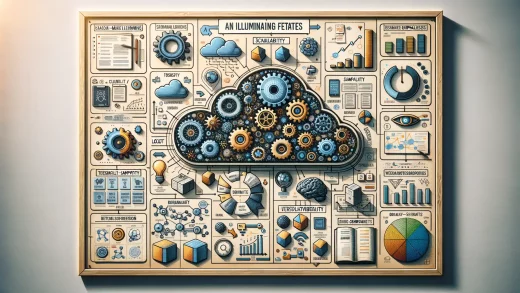Introduction to Blockchain in App Development
Step into the world of app development, and you’ll notice one word buzzing louder than the rest—blockchain. This isn’t just another tech trend destined to fizzle out; it’s a paradigm shift. Imagine your app as a high-speed train, and blockchain as the unbreakable rails that keep it secure, transparent, and efficient.
Blockchain: The Backbone of Trust in Apps
At its core, a blockchain is like a digital ledger carved in stone. It stores data in blocks, chained together to ensure no tampering or loopholes. Why does this matter for apps? Because apps rely on trust—whether it’s handling sensitive user data, conducting transactions, or verifying identities. Think about mobile payment apps: Blockchain ensures every transaction is accurate and immune to fraud, all without middlemen nibbling away at your profits.
But it’s not just about security. Here’s where blockchain stands out:
- Decentralization: Say goodbye to single points of failure. Data in apps gets distributed across multiple nodes, reducing risks of hacks.
- Transparency: Every action is recorded. No shady edits, no cover-ups—just pure clarity.
- Automation: Thanks to smart contracts, processes like subscriptions or loyalty rewards run themselves without human intervention.
Why Developers Are Embracing Blockchain
Developers are flocking to blockchain like bees to honey—and for good reason. Building apps on a blockchain network feels like turning on “hard mode” security. Fraudsters can try to cheat the system, but they’ll find themselves stuck in an unbreakable web of cryptographic protections. And the cherry on top? It promotes global collaboration. A blockchain-based gaming app, for instance, could let players trade assets securely with users across the globe. Excited yet?
Key Benefits of Blockchain for Application Development

Turbocharge Your App’s Security and Trust
Imagine building an app where trust is baked directly into the code. That’s what blockchain offers. With its decentralized nature, data isn’t sitting on one vulnerable server waiting to be breached. Instead, it’s spread across a network of nodes, making it nearly impossible for hackers to crack. Think of it as locking your valuables in not just one safe but thousands simultaneously!
And guess what? Blockchain also ensures data remains tamperproof. Each transaction is time-stamped and linked to the one before it—creating an unbreakable chain of authenticity. For apps dealing with sensitive data like financial transactions or personal information, this can be a game-changer. Users will love you for it—they’ll trust your app implicitly.
Speed, Efficiency, and Transparency All Wrapped Into One
Blockchain isn’t just about security; it’s about efficiency too! By cutting out middlemen, you avoid those pesky bottlenecks between processes. Here’s what blockchain brings to the table in terms of performance:
- Lightning-fast transactions: From crypto payments to cross-border transfers, speed is unmatched.
- Smart contracts: Automate tedious processes like approvals, payments, or verifications without manual input.
- Transparent record-keeping: No more disputes over “he said, she said.” Everything’s visible, immutable, and fair.
Picture this: Your app runs smoother than ever, offers unbeatable trust, and empowers users like never before. Blockchain makes that vision not just possible but inevitable.
Real-World Examples of Blockchain in Apps

Revolutionizing Payments and Beyond
Ever found yourself wondering how apps make payments faster, safer, and smarter today? Enter the world of blockchain-powered apps! Take Venmo on steroids—blockchain takes peer-to-peer transactions to the next level. Apps like Circle are using blockchain to let people send money across borders in seconds with almost non-existent fees. Forget traditional banks making you wait days; this is instant gratification.
But hold on—it’s not just about payments. Blockchain’s tamper-proof nature is reshaping industries. For example, Everledger uses blockchain to track the journey of diamonds. Imagine holding your smartphone and knowing the history of that sparkling stone—from the mine to the store! This isn’t just transparency; it’s peace of mind on a whole new level.
- Gaming apps: Platforms like Axie Infinity let users truly own in-game assets, thanks to blockchain-based NFTs. No more “inaccessible items” locked in one account forever!
- Healthcare apps: Blockchain ensures medical records stay secure yet accessible to authorized doctors worldwide. Think data security meets life-saving convenience.
Seriously, blockchain is turning apps into storytellers of trust and innovation. The possibilities? Practically endless.
Challenges and Considerations in Implementing Blockchain

Peeling Back the Layers of Blockchain Integration
Diving into the world of blockchain might feel like stepping into uncharted territory. Its allure is undeniable—decentralization, transparency, and rock-solid security. But implementing it in app development? That’s where things get tricky, like trying to tune a symphony with no sheet music.
One major hurdle? Scalability. Let’s face it—blockchain networks can be slow. Picture this: A user taps “buy” on your app, but instead of an instant transaction, they’re stuck watching the spinning wheel of doom because the network can’t handle the load. Frustrating, right? Blockchains like Ethereum are fabulous, yet their limited transactions-per-second capacity can bottleneck app performance.
The Price Tag Nobody Talks About
Implementing blockchain carries hidden costs, like unpacking a gift only to discover endless layers of packaging. Consider these challenges:
- High energy consumption for proof-of-work systems, leading to potential sustainability concerns.
- Specialized developer expertise needed—a rare gem that doesn’t come cheap.
- Compliance labyrinths. Depending on the country, navigating data regulations for decentralized systems can be a legal tightrope walk.
And then there’s user adoption. Will your audience embrace complex private keys or peer-to-peer ideologies? Sometimes, simplicity triumphs over innovation, even when the technology is groundbreaking.
Future Trends of Blockchain in App Development

The Rise of Decentralized App Ecosystems
The future of blockchain in app development is sparkling with potential, like a vast galaxy waiting to be explored. Imagine apps no longer tethered to a single server or vulnerable to centralized failures—this is the promise of decentralized ecosystems. As blockchain technology matures, developers are beginning to weave it deeper into app architecture, creating platforms that thrive on transparency and user empowerment.
Consider this: instead of users blindly trusting companies with sensitive data, they could own their information, secured by smart contracts on a blockchain. No backdoors, no corporate leaks—just peace of mind. Beyond finance and crypto wallets, we’re seeing the rise of blockchain-based social networks, gaming platforms with true asset ownership, and even decentralized ride-sharing services.
- Self-sovereign identities: Apps that allow users to control their digital identity without needing third-party logins.
- Interoperable blockchains: Expect increased connectivity between different blockchain networks, driving seamless app integrations.
Blockchain Meets AI: A Power Duo
Picture this dynamic duo: blockchain’s unshakable trust paired with AI’s predictive intelligence. Together, they’re reshaping app possibilities. Think predictive healthcare apps where personal health records are securely encrypted, or marketplaces using both technologies to create fraud-proof e-commerce solutions. The pace of innovation here? Astronomical.



